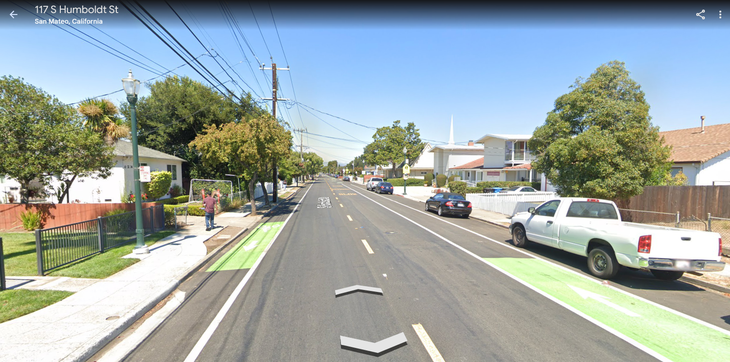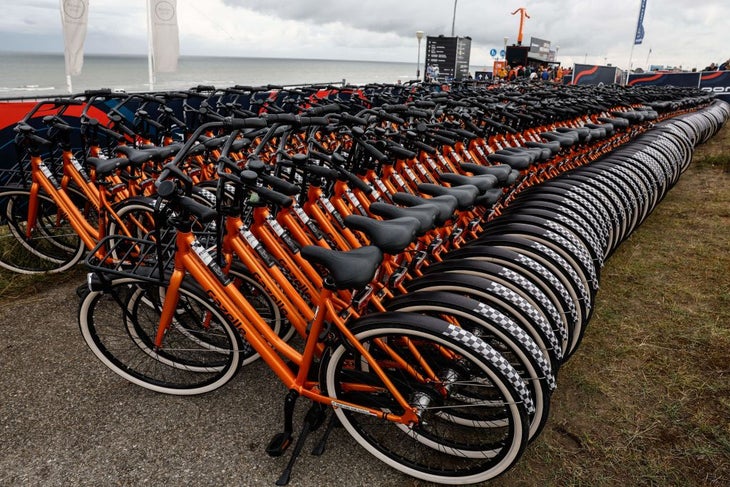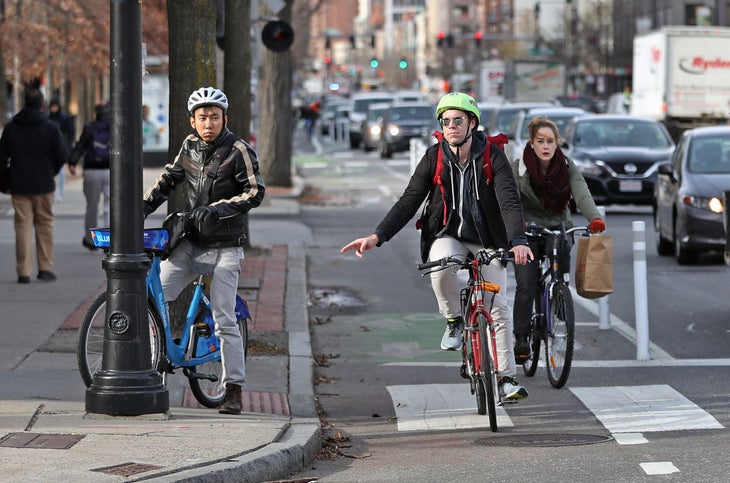Why Cities Are Tearing Out Bike Lanes (And What to Do About It)

The future of bike lane infrastructure is not in a good place at the moment.
In a recent interview with the New York Post, the President criticized New York City’s network of bike lanes, saying:
They should get rid of the bike lanes and the sidewalks in the middle of the street. They’re so bad. They’re dangerous. These [electric] bikes go at 20 miles an hour. They’re whacking people.
Of course, this isn’t just a one-off statement about bike lanes from a noted stage race organizer. Cities across North America are taking out bike lanes left and right. According to the data, the vast majority of bike lanes are working as intended: connecting communities traveling by bike, on foot, and even in a car. The trouble is that most people don’t believe it.
Similar Reads
The bike lanes being taken out
Though the results are infrequently commensurate with bike lane advocacy efforts, groups like PeopleforBikes tout a net improvement in bike network connectivity across the U.S. But any amount of change will come with pushback.
Here comes the pushback.
One of the most prominent examples comes from Ontario Premier Doug Ford, whose government is moving forward with Bill 212 dubbed the ‘Reducing Gridlock, Saving You Time Act.’ Passed in November 2024, the bill aimed to give the province the power over cities to pull out bike lanes as well as require municipalities to receive provincial permission before removing vehicle lanes to add a bike lane.
That action has seemingly inspired places like San Mateo, CA (in the San Francisco Bay Area) to vote to remove its longest bike lanes in the city and replace them with roughly 100 car parking spots. In return is a bike boulevard on a nearby street. A bike boulevard, more often than not, is code for a street with sharrows painted on the ground and no dedicated division between cars and cyclists, and that’s what’s happening here.

Estimates say replacing the original parking will cost over $600,000 to install, with the new bike boulevard an additional $300,000. Both will take roughly a year to complete.
There are a whole lot of other examples of bike lanes being torn out of cities just years after their installation. We’ve covered the bike lanes in Los Angeles slowly being torn out for car parking previously, and they’re continuing course slowly but surely.
Houston, Texas — a city with the same number of yearly pedestrian deaths as New York City with just one third of the population — elected a mayor with a propensity to take out dedicated bike lanes. He suggested that “Bikers need to be protected from the traffic, and they need to do that on bike paths that are recreational and not try to compete with people going to work and school.”
All of this is dangerous, simply because of how challenging it is for any community to advocate for swapping car parking for bike lanes. Once car parking is in, it is nearly impossible to remove. People don’t want to remove an amenity they already have, and if you’ve been to any city council meeting, you’ll know just how much people value their car parking.
Why cities remove bike lanes
I don’t have a full data analysis here as to why North American cities are starting to remove bike lanes, and if you do, by all means, drop a comment below. What I do have is a whole bunch of experience trying to advocate for bike lanes to folks who are at best ambivalent about people biking around their cities. I see three key reasons why cities remove bike lanes.
Reason 1: Outspoken pushback
The most obvious reason is due to pushback, which itself comes in all forms. There might be public backlash from drivers who feel that a bike lane imposing on space they’re accustomed to causes traffic congestion, while the bike lane itself is comparatively empty.
It’s not that cycling is so left of field that it’s impossible to imagine. Rather, it’s that getting around in a car is so normal that cycling feels weird, even with its helpful boost in mode share from Covid.
And when that pushback comes, there’s only so many folks who can fight. Not all cyclists come from marginalized communities, but marginalized communities are more likely to walk or roll their destinations than anyone else. While more folks drive to their destinations than bike, an outsized proportion of folks with the time to go to city council meetings are almost always wealthier and less likely to bike or walk. That leaves commuting by bike less likely to be advocated for by folks who haven’t already advocated for those bike lanes before.
The squeaky wheel gets the grease, and when it comes to opposing bike lanes, that squeaky wheel gets louder than almost anything else.
Reason 2: Lack of commitment

What makes a good bike lane? According to our time with PeopleForBikes, it takes a whole lot of investment in a dedicated bike network.
Cyclists who feel comfortable riding with car traffic are generally unbothered by having to ride beside cars, even on wider, faster, and more heavily trafficked streets. But as we’ve seen in one of the few cities to truly invest in a bike network, Cambridge, Massachusetts, you only get non-cyclists to commute by bike by ensuring the entire trip feels safe.
That safety isn’t just painted bike lanes. And it’s certainly not a sharrow and a bike boulevard as San Mateo, California proposes replacing its lanes with. Rather, it comes from commitment that goes farther than just that one bike lane.
Cambridge went as far as to mandate protected bike lanes. The results speak for themselves: more cyclists on the road at all times, more kids on bikes, and accidents between cars and bikes cut by half.
Bottom line, cities need to invest in a connected, safe, and easy-to-navigate network that truly connects common destinations. Until that happens, you’re going to continue to see empty bike lanes and only the most dedicated cyclists willing to spar side by side with two-ton cars.
Reason 3: Human nature
We’re human. I love being human, but our fascination with negativity really hurts us here.
We’ll share with the world how hard it is to find parking any chance we get because we know we’ll find a captive audience ready to get riled up themselves. Rarely will we mention how easy it is to find bike parking, much less simply walk to a destination. More often than not, that brings a skewed perception of how difficult driving in a city can be, much less parking in a city.
Numerous studies show that bike lanes make more sense in areas that are fairly dense. They’re more efficient at moving people through and within a space than a car. While a small business might lose that car driver who would love to park right in front, they’ll gain more people walking and biking. San Francisco’s Valencia Street is a great example of how bike lanes benefit everyone, in case you’re curious.
What can we do? Stay the course

One of my favorite quotes comes from the former Commissioner of the NYC Department of Transportation, Janette Sadik-Khan, who said, “The status quo is a hell of a drug.”
Sadik-Khan got blowback of all kinds when she oversaw the city’s rollout of bike lanes in the early to mid-2000s. “There aren’t enough cyclists for my business to warrant installing bike lanes!” many would argue.
And now? The network of bike lanes in New York City is so effective and has increased ridership so much that people are taking notice.
If there’s anything we’ve learned over the last few years, it’s that data rarely convinces people of anything; it only cements someone’s beliefs. What works is persistence and coalition. Cities might be in a mad dash to tear out bike lanes, but if they were put in before from sheer effort and advocacy, they can be maintained and even built upon. We challenged the status quo before, and we can do it again.
Welcome to the Urbanist Update. My job here might be as a tech editor, but I’ve also spent tons of time studying transportation, city planning, and engineering. Here are some of the things I’ve found interesting over the past week related to biking in cities, cycling infrastructure, and urbanism.
What is urbanism? In short, it is the study of how the inhabitants of an urban area interact with their towns and cities. If you care about building sustainable communities that let you live a happy and healthy life, then this is the spot for you. See previous Updates here.


